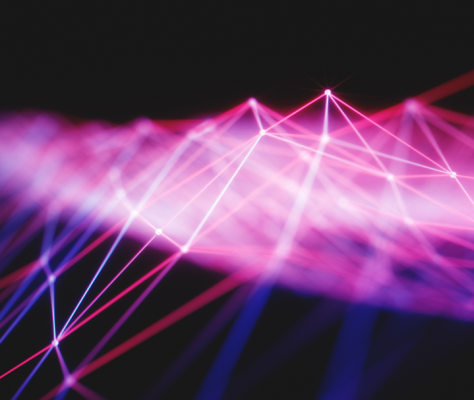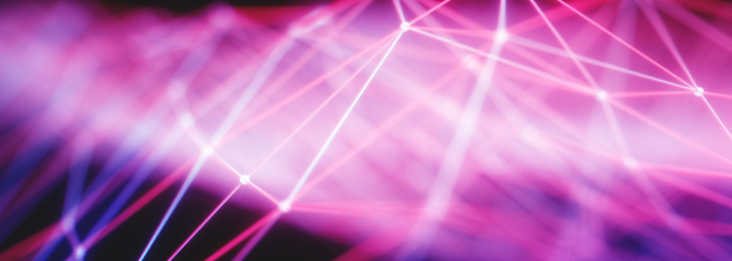I have no doubt we will see artificial general intelligence (AGI) in my lifetime. For those wondering, AGI is a machine that has the capacity to understand or learn any intellectual task that a human being can. A number of tests have been proposed for this intelligence. One of these requires a machine to enter an average American home and figure out how to make coffee: find the coffee machine, find the coffee, add water, find a mug, and brew the coffee by pushing the proper buttons. At my morning coffee I, the last of the coffee-making apes, will sit across from my silicon superior. Always one for small talk I might inquire as to their design. “What’s with that sensor on your arm thingy?”
Ross, our founder, likes to talk about the ‘brain in the jar,’ whereby artificial intelligence is useless without the ability to act on that intelligence. This is true, and so is the ‘bundle of nerves’ where a nervous system makes for a tangle without a brain and logic to orchestrate it. Put these together and it goes that a higher level of intelligence might be found in composite systems. Customers will increasingly seek-out these composite systems to support their use cases.
A nervous system
Some of these systems will be generalized and others highly specialized. It’s insightful to look at our own biological intelligence for use cases. Take the reflex action: when I touch the hot coffee pot, I jerk my hand away without thinking. My sensors triggered a message directly to my spinal cord, bypassing my brain. The digital analogy is an IoT sensor passing a heat reading to the application network which prioritized a message to my bionic arm. Only afterward does it send the message to my brain — ‘You got burned!’ Protective, involuntary, and rapid — this is a specialized system for a particular class of use cases.
Analyst firm, Cognilytica, has defined a framework that groups AI use cases like this into seven patterns: hyper-personalization, autonomous systems, predictive analytics and decision support, conversational/human interactions, patterns and anomalies, recognition systems, and goal-driven systems. We need to start the build-out of systems that support these as pre-packed application network components — starting first with the goal of getting my coffee.
The brains behind the operation
Brain systems can also be specialized. When we model brain function in computer science we have, although not always, imitated biological architecture. To recognize my coffee cup, my eye starts by looking for the edges and curves of the cup. This information, stored in simple cells then gets fed to more complex cells that combine it with other information, the aroma of beans, to help me locate my next hit. Convolutional neural networks (CNN) are an AI architecture for image recognition that mimics nature’s algorithm in this regard. This architecture is in turn used to develop technologies like Einstein Vision that enable shoppers to visually search for items. We have seen the emergence of development environments for these digital brains that combine intelligent algorithms with data, which enables developers to create applications for image recognition, natural language processing, and voice recognition.
Putting the pieces together
With Salesforce, we have many of the components needed to build such systems, the software — MuleSoft, Tableau, Einstein, and the data – customer, product, service history. We need to arrange these components together into higher-level systems with intelligence. Originally we brought to market primitive cells in the form of connectors. Now, these connectors are combined with other application network assets to form more complex cells or in silicon speak ‘Accelerators’ — specialist functions that can snap into an application network to support specific use cases. The Mule equivalent of wiring a burn reflex system into the spinal cord. An example is MuleSoft Accelerator for Work.com which is a composite system that helps organizations and their employees adapt to our new normal.
Emergence of the intelligent network emerges
When we start to arm these accelerators with their own micro-brains, CNN based or otherwise, we provide a level of intelligence into that system which can then be fed into intelligence at higher levels to build our overall enterprise intelligence. The application network is the fabric which binds the components and subsystems together. It is a central nervous system of sorts that provides pathways for data to flow. To avoid a ‘brain in the jar,’ and a ‘bundle of nerves’ we allow attach points between nodes for intelligent components that consume this data to provide insights and actions.
As I pan out and look over the application network I start to see the consciousness of my enterprise emerge — deep thoughts. Would you like a copy of coffee, Andrew? “Yes please, Robot!”
To learn more about AI and MuleSoft, check out this webinar to go beyond chatbots with intelligent customer and employee experiences.









